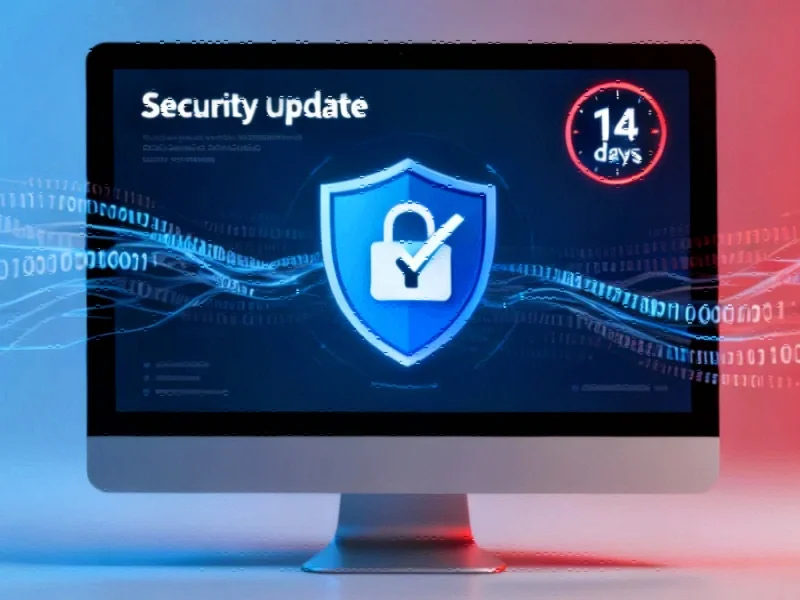Unprecedented Security Crisis Hits Windows Systems
Microsoft’s October security update has revealed a perfect storm of vulnerabilities, with federal agencies receiving an urgent 14-day deadline to patch their systems. The Cybersecurity and Infrastructure Security Agency (CISA) has taken the extraordinary step of mandating updates for Federal Civilian Executive Branch agencies, while strongly urging all organizations to follow suit immediately.
The scale of this month’s security update is staggering—Microsoft addressed 196 Common Vulnerabilities and Exposures (CVEs), shattering the previous monthly record of 161. This comes during a year that was already setting records for vulnerability counts, indicating a rapidly escalating threat landscape that demands immediate attention from all Windows users.
The Two Critical Threats Driving the Emergency
Among the massive collection of patched vulnerabilities, two stand out as particularly dangerous, both already being exploited in the wild as zero-day threats.
CVE-2025-59230 represents a critical flaw in Windows Remote Access Connection Manager that enables local privilege escalation. “Local elevation of privilege is always attractive to an attacker,” explains Adam Barnett, lead software engineer at Rapid7, “since even if it doesn’t get them where they need to be, it can provide an important link in the chain.”
Meanwhile, CVE-2025-24990 poses an even more insidious threat, residing in legacy Agere Modem driver code that ships with all supported Windows operating systems by default. This vulnerability affects systems regardless of whether the associated hardware is present or in use, making its impact virtually universal across the Windows ecosystem.
The Legacy Code Time Bomb
What makes CVE-2025-24990 particularly concerning is its origin in decades-old code that predates modern security practices. Ben McCarthy, lead cyber security engineer at Immersive, warns that “this driver, which supports hardware from the late 1990s and early 2000s, predates current secure development practices and has remained largely unchanged for years.”
Alex Vovk, CEO and co-founder of Action1, elaborates on the technical severity: “It’s an Untrusted Pointer Dereference flaw that lets attackers manipulate memory with kernel-level privileges due to improper validation of user-supplied pointers. The issue is especially concerning because it resides in legacy code installed by default on all Windows systems.”
The implications are staggering—this vulnerable code has been sitting on potentially hundreds of millions of systems for years, if not decades, waiting to be discovered by attackers.
Microsoft’s Radical Solution and Its Consequences
In a bold move that underscores the severity of the situation, Microsoft has chosen to completely remove the vulnerable Agere Modem driver rather than attempt to patch it. McCarthy applauds this approach, noting that it “prioritizes attack surface reduction over absolute backward compatibility.”
However, this decision comes with significant consequences for organizations still using Agere modem hardware. As Vovk notes, “Beyond the immediate security risk, organizations using Agere modem hardware will face compatibility issues, as the hardware will cease to function after the October update.”
This situation highlights the difficult balance between security and functionality that enterprise technology managers must constantly navigate in today’s threat landscape.
The Attack Chain Nightmare Scenario
The danger extends far beyond individual vulnerabilities. Vovk describes how CVE-2025-24990 can enable sophisticated attack chains: “In sophisticated attack chains, it can escape sandboxes, establish persistence, deploy additional malware with system privileges, move laterally, and compromise security tools.”
This creates a domino effect where initial access can quickly escalate to full system compromise, making timely patching absolutely critical. The vulnerability’s impact is estimated to affect 90-95% of Microsoft Windows-based organizations, creating one of the most widespread security threats in recent memory.
Broader Industry Implications
This security crisis emerges amid other significant industry developments in processor security and ongoing challenges across the technology sector. The situation underscores how legacy components can create systemic risks years or even decades after their introduction.
Meanwhile, the security landscape continues to evolve with new threats emerging regularly. Recent related innovations in artificial intelligence and media manipulation demonstrate how attack vectors are diversifying, making comprehensive security practices more important than ever.
The current Windows security emergency also coincides with other significant market trends in digital security and authentication technologies, highlighting the interconnected nature of modern cybersecurity challenges.
Immediate Action Required
With CISA’s two-week deadline already in effect for federal agencies, all Windows users should treat this as an emergency situation. The combination of active exploitation, privilege escalation capabilities, and widespread system impact creates a perfect storm that demands immediate attention.
System administrators and individual users alike should prioritize installing the October Windows security updates without delay, testing for compatibility issues, and preparing contingency plans for any legacy hardware that may be affected by the Agere driver removal.
The window for prevention is closing rapidly—acting within the 14-day timeframe recommended by cybersecurity authorities could mean the difference between maintaining secure operations and falling victim to what may become one of the most significant cybersecurity incidents of the year.
This article aggregates information from publicly available sources. All trademarks and copyrights belong to their respective owners.
Note: Featured image is for illustrative purposes only and does not represent any specific product, service, or entity mentioned in this article.


